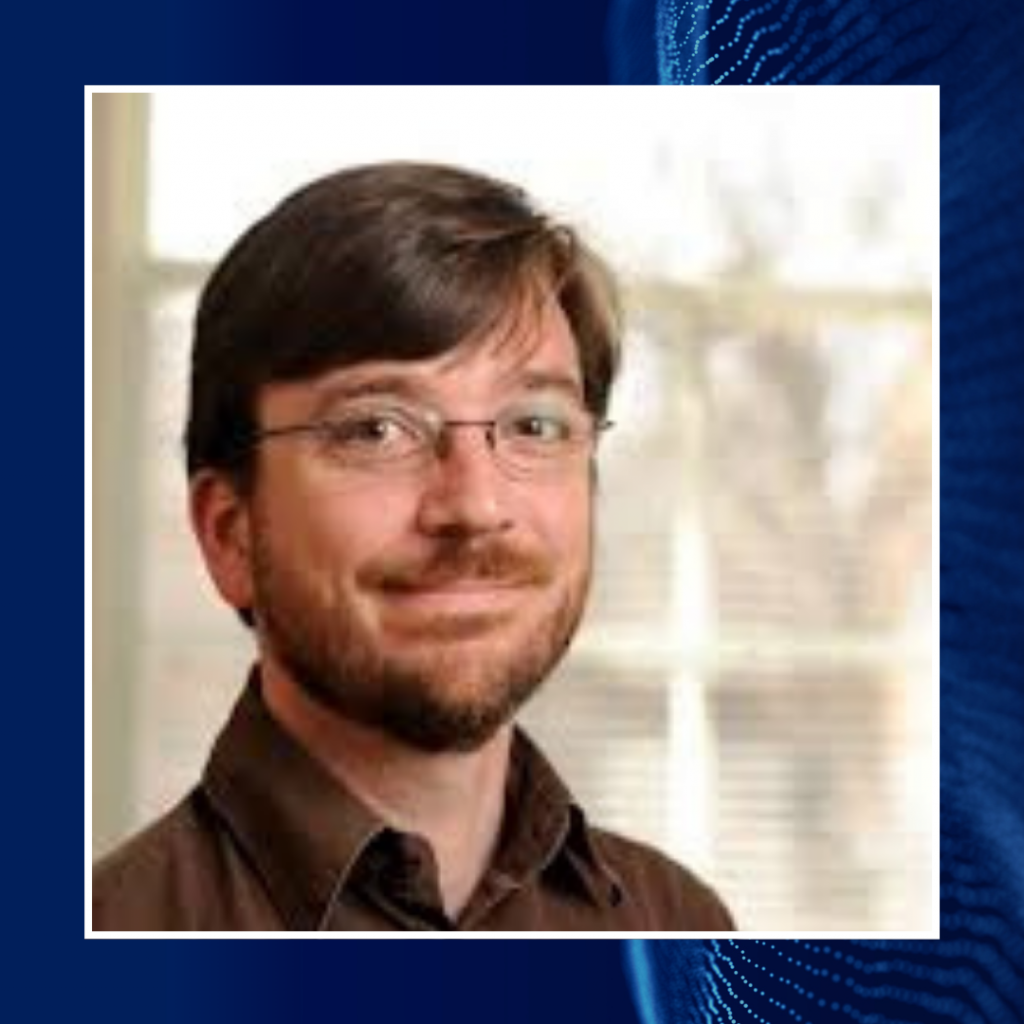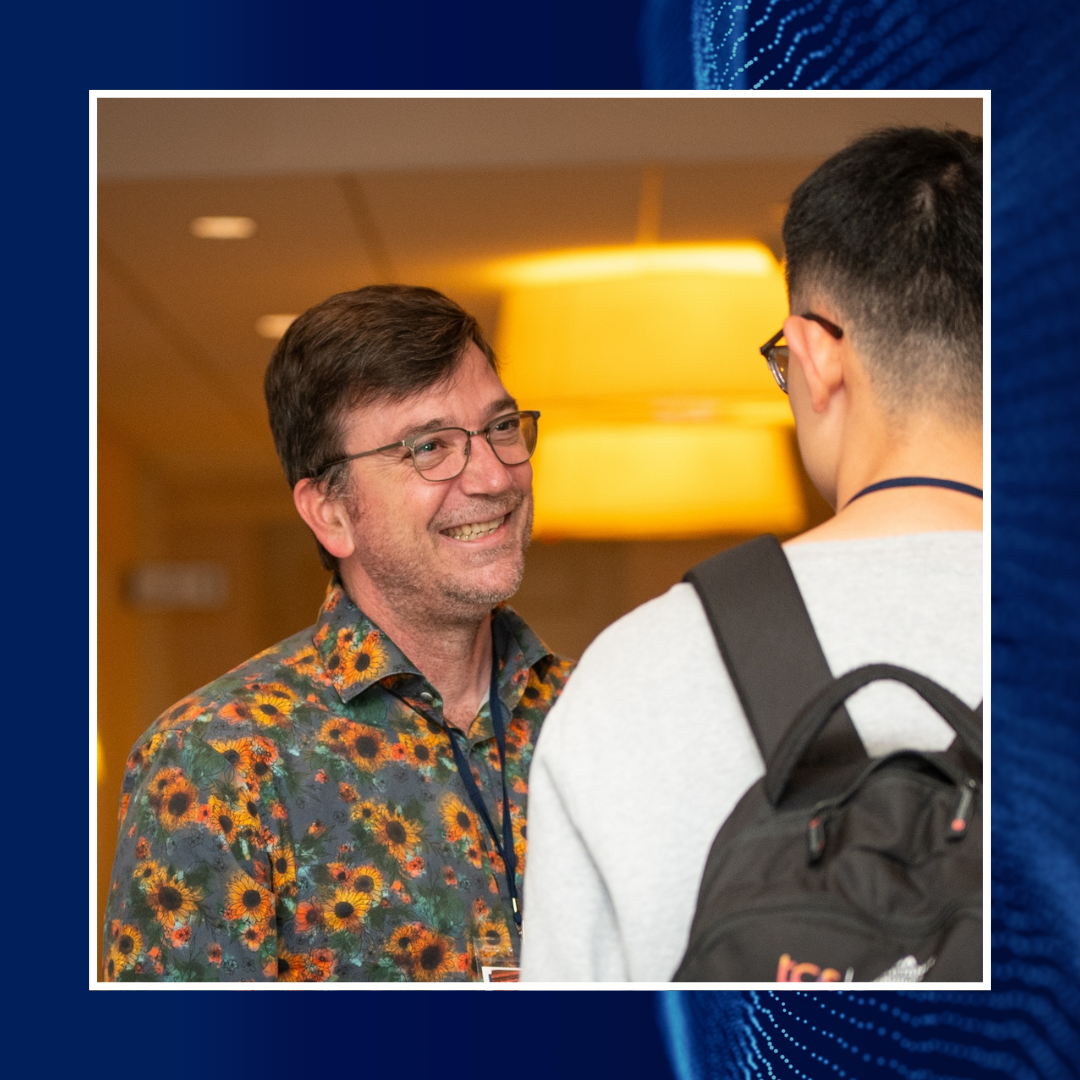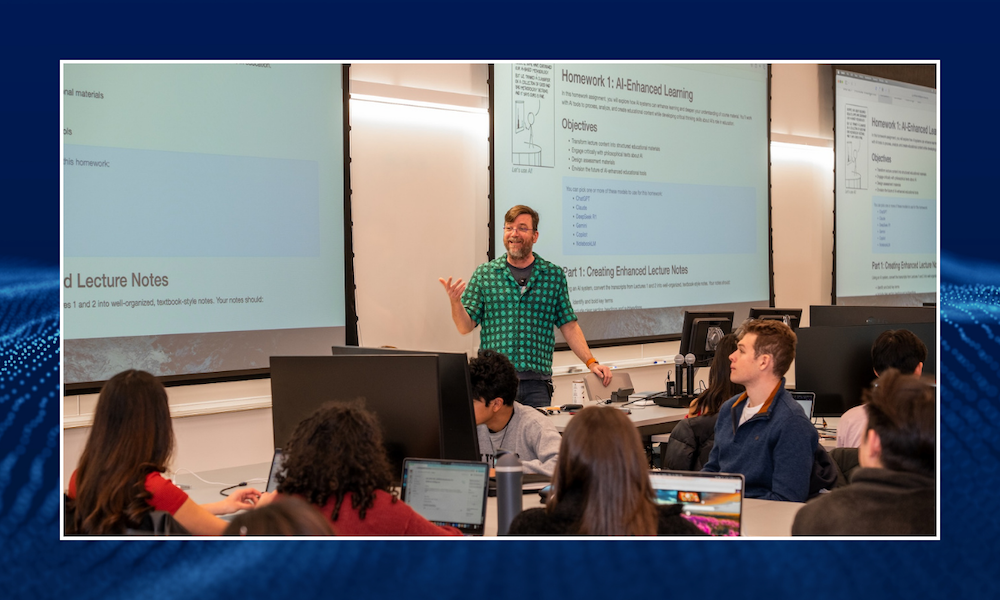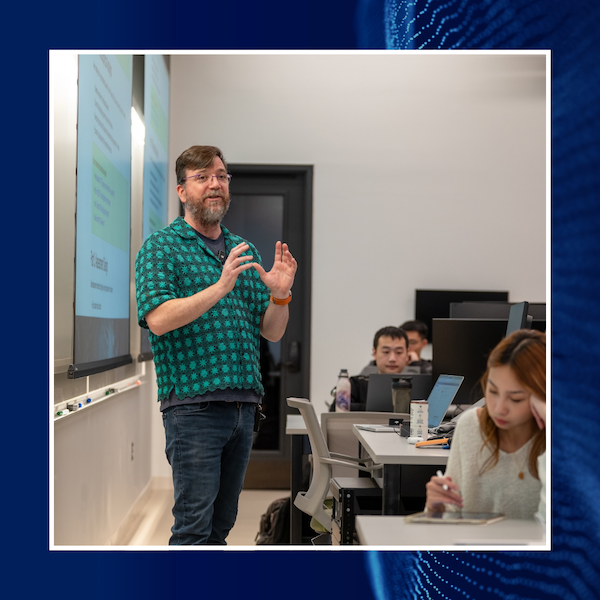“Exactly the Most Exciting Time”:
Penn Engineering’s Chris Callison-Burch on 25 Years of AI Innovation
Artificial intelligence may feel like a recent revolution, but for Chris Callison-Burch, Program Director of the online Master of Science in Engineering in Artificial Intelligence (MSE-AI Online) degree program, it’s the culmination of a 25-year journey – one that shows how breakthroughs happen when technology, data, and vision align. His AI story starts in the late 1990s, spans multiple paradigm shifts, and culminates in a moment he calls “exactly the most exciting time to get into this field.”
“Artificial intelligence has a very long history… the term itself was coined in the 1950s.” — Chris Callison-Burch
The Spark: Language, Logic, and an Interdisciplinary Launch
Callison-Burch traces his entry into AI to 1999, when a visiting-day presentation at Stanford during his senior year of high school introduced him to the Symbolic Systems Program—an interdisciplinary blend of computer science, linguistics, psychology, and philosophy centered on how humans and machines communicate. During his undergrad at Stanford, Callison-Burch immersed himself equally in linguistics and computer science, drawn to the challenge of enabling computers to use human language with human-level proficiency.

“I was all in as a high school senior when I learned about a program that blended linguistics with computer science, and I never looked back.” — Chris Callison-Burch
Between undergrad and graduate school, he joined a company during the early internet boom, licensing machine translation software from multiple vendors and building a translation system that could scale to the internet. When his proposal for the company to build its own machine translation systems using statistical machine learning was declined, he pivoted to graduate research.
An Academic Journey Leading to Penn
Callison-Burch completed his master’s degree in computer science at the University of Edinburgh in Scotland. He stayed to complete his doctoral program at the same university, where he focused on building statistical translation software that automatically learned how to translate languages. A startup was attempted during his PhD program, funded by a grant from the Scottish government, but Google Translate’s free launch undercut the business case and steered him decisively toward academia.
After returning to the U.S. and spending several years as a research faculty member at Johns Hopkins, he fielded tenure-track offers from Carnegie Mellon, Johns Hopkins, and the school he ultimately selected, the University of Pennsylvania. Today, as Program Director for the MSE-AI Online degree program, he’s channeling decades of experience into training the next generation of AI innovators. As a professor in the Computer and Information Science department, he leads online courses for graduate students and also teaches undergraduate AI courses on campus.
Chris Callison-Burch featured as the keynote speaker at Penn Engineering Online’s 2023 Fall Fest.
25 Years of Change in Artificial Intelligence

“I’ve been in the field long enough to see several major transitions in the approach to artificial intelligence research.” — Chris Callison-Burch
From Rules to Learning
Over the past 25 years, Chris Callison-Burch has seen artificial intelligence reinvent itself again and again. “When I was an undergraduate, we were at the tail end of the symbolic era of AI,” he recalls, when researchers relied on manually-written rules to teach computers how to reason. That approach soon gave way to a data-driven revolution. As machine learning took off in the early 2000s, the way people talked about the field shifted—“artificial intelligence” faded from use for a time, and “machine learning” became the buzzword of the moment. This pivot was in full swing when Callison-Burch was entering his doctoral program, so he focused primarily on statistical machine learning for his PhD.
Technology That Sparked Breakthroughs
Each new era of AI was sparked by a wave of fresh technology. The rise of the internet in the mid-1990s suddenly made enormous amounts of text data available, fueling advances in search engines, translation, and natural language processing. Later, the deep learning revolution launched when it was discovered that computer chips originally designed for video games turned out to be perfect for training neural networks. As Callison-Burch put it, “those chips, combined with the data, combined with the algorithms, all supercharged this era of training large-scale neural networks.” These technology milestones went hand-in-hand with research advances that generated breakthroughs and pushed the field into today’s age of deep learning and large-scale generative models.
Investment That Shaped the Field
Funding and investment have always shaped the pace of AI progress. Although periods of underinvestment slowed the field, government agencies like Defense Advanced Research Projects Administration (DARPA) provided critical support at key moments. Their initiatives in language translation technology and autonomous driving paved the way for tools like Google Translate and the rise of self-driving cars. The University of Pennsylvania played a role by contributing to a DARPA challenge that dramatically accelerated autonomous driving. Government investment and research often lays the foundation for technologies that later reach mass commercialization.

“I don’t think you would have commercialized efforts at self-driving cars without that large-scale investment in research by the U.S. government,” notes Callison-Burch.
Callison-Burch’s Defining Contribution to Machine Translation
As a young faculty member at Johns Hopkins in 2007, Chris Callison-Burch made his mark by developing translation systems that helped institutions like the European Union draft documents across multiple languages. His most-cited paper – now referenced more than 7,400 times – introduced the statistical approach that powered this breakthrough. By releasing the software as open source, he democratized machine translation worldwide, proving that research matters most when shared.

“Creating a machine translation system that could automatically learn to translate between any pair of languages, given enough training data,” Callison-Burch explained, “was a breakthrough that demonstrated the power of data-driven approaches to language technology.”
Just as important as the research itself was the decision to make it open source, releasing translation software that any researcher could use and make contributions toward. This democratized the field, allowing PhD students, professors, and institutions worldwide to build their own translation systems. The software found its way into projects across Europe, even helping the European Union generate draft translations for the whole of the EU. For Callison-Burch, these tools and algorithms represent a defining contribution—making cutting-edge translation technology accessible to the global research community.
Penn’s Place in the Story
Throughout these shifts, the University of Pennsylvania has played an important role in shaping the field—from pioneering work in natural language processing to training new generations of AI researchers. As Callison-Burch notes, the environment at Penn gave him and his peers access to the resources, mentorship, and collaborations that helped drive progress. Penn was also among the universities contributing to the DARPA challenges that accelerated autonomous driving, an example of how progress emerges when universities, government, and industry work together. Today, that tradition continues as Penn Engineering students learn directly from faculty who are not only teaching but also actively contributing to the breakthroughs defining AI’s future.
Chris Callison-Burch teaching undergraduate students at the University of Pennsylvania.
Why AI History Matters Now
If AI feels new, it’s only because the current wave is finally visible to everyone. The reality is a multi-decade journey of breakthroughs which have led to the current AI revolution. From symbolic systems, statistical learning, neural network-based approaches, to today’s generative AI—students entering the field now have an unprecedented opportunity to shape the future. Looking back on these cycles of innovation, Callison-Burch reflects: “Artificial intelligence in the general sense of intelligence is now possibly within reach.” For Penn Engineering students, that reach extends into their coursework, their projects, and ultimately, their careers—equipping them not just to enter the field, but to define its next chapter.
LEARN MORE ABOUT OUR AI MASTER’S DEGREE PROGRAM

Explore the ins-and-outs of the MSE-AI Online degree program from the application process to the curriculum.

Visit the Penn Engineering Online YouTube channel to watch past MSE-AI webinar recordings featuring our Program Director, Chris Callison-Burch and other members of our team.

Check out an upcoming virtual admissions event to hear from our Admissions Team and ask questions about the program.






